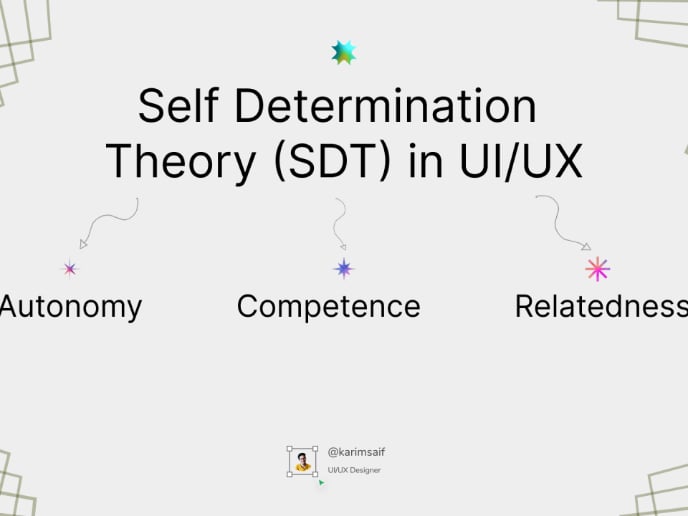Storytelling, not reporting. Engaging case studies
Turn your portfolio into a story that stands out on the market with 10 practical tips and examples.
If you're not getting invited to design interviews, chances are — your portfolio is holding you back. If you’re focusing on explaining your design process then this post is for you.
The bad news is:
You’ve poured time and effort into sharing all the details about your project, only to find it’s not hitting the mark. Process-driven case studies can be a turn-off for hiring managers who’ve seen the same design thinking template over and over again.
The good news is:
There is a proven way to help your portfolio stand out:
And it is by telling good stories.
We can do this by following a ‘Story arc’.
The story arc is a classic storytelling structure found in books and movies that represents the progression of a narrative through 3 stages:
1. Beginning → 2. Middle → 3. End.
When applying it in the case study, we can simply replace it with:
1. Context → 2. Story → 3. Results.
To make sense of it, let’s go through each start one by one.
1. Context
1.1 The book cover...
Any great story starts from a preview. In the movies from a poster, in literature from a book cover. The same applies to case studies, a cover image is your book cover. If your book cover doesn't stand out on the shelve, no one is going to buy it.
Here are two examples. Both are looking great. Clean, sleek, apple style.
- ⛔️ Example A: All the screens are tilted and hard to read. There are a lot of details, but they are not telling what we'll be seeing inside. We also cannot look through the UI details.
- ✅ Example B: With only one detail you know what is this project about. In this case, it must be related to some job posting. We can also learn enough about the designer's UI skills. Same style, but a better story.
1.2 Does your title sound intriguing?
⛔️ Example A: It's one way to say — This is the company and this is a topic.
✅ Example B: It's way better to say — here was a challenge, the subject, and an impact. By adding only two components (challenge and impact), you're implying the scope of the work and the range of the skills you were acquiring.
Let's break down this example:
👉 Title: Redesigning POS user experience for 1,2m DAU waiters.
This title includes the subject (POS for waiters), the challenge (implying that lots of daily users have strong habits, so the goal is to improve UX, but not break the habits), and the impact (1,2 DAU).
💡Tip: The 'challenge' here is a hook that aims to spark curiosity and motivate the reader to learn how you solved it. Think how your project title can imply an intriguing challenge that prompts readers to read the full story.
1.3 Striping away the context layers.
In the bookstore, you don't have time to read the book. Neither do hiring managers have time to read your case study when they're reviewing 500 portfolios.
⛔️ Don't start by throwing a bunch of context at the hiring manager. The longer your first section, the more likely they’ll skip over it entirely.
✅ Conclude in only 1 sentence what's the story about. Just like in the title you want to expand on the subject, the challenge, and the impact:
👇 Example:
- Subject: [Product X] is a family of POS products built on-premise for thousands of restaurants over 30 years.
- Challenge: This made a business not sustainable, enabled a range of inconsistencies, and forced supporting multiple devices.
- Impact: I designed the first design system using universal cross-platform visual language but preserved a familiar UX logic to avoid breaking habits.
2. Story
2.1 Design your headlines.
Imagine you're about to read an interesting book, but as soon as you open it — you see yet another double diamond and a bunch of sections about the steps you took in the process.
✅ Example B: Martin Jancik is a design manager at Kiwi (the flight booking engine). If you just read this title and you connect the dots you immediately understand that "We do not sit together" is probably about seat assignments. This headline leads with a great insight, not a design process step.
💡Tip: Head over to your case study and read only headlines. What story is your project telling?
2.2 Lead with research insights, not methods.
 ⛔️ Don’t start by saying what research methods you’ve used and show a bunch of Miro screenshots. No one will be able to understand them. That’s process reporting.
⛔️ Don’t start by saying what research methods you’ve used and show a bunch of Miro screenshots. No one will be able to understand them. That’s process reporting.
✅ Prioritize the key insights that impacted the end result. Reflect on:
- What were your AHA moments that defined your project direction?
- The conversation nuggets that made you realize something new.
- The assumptions that you were wrong about?...
The insights you’ve uncovered will tell a story. Not research methods. But don’t get me wrong, mention the research methods, just not in the first place.
💡Tip: Design your infographics to tell the story. Just like your project cover image, infographics support the story.
2.3 Support your ideation with comments.
⛔️ Don’t throw at the hiring manager a bunch of whiteboarding photos just to show you did your job.
✅ Explain what you were exploring. Whiteboards are great, but you always need to support them with notes and explanations. Share what directions you were exploring. What ideas you've had in mind? Here is an example from my case study where you can check a way to support your sketches with some notes.
2.4 Rationalize your design choices.
I hope you got the drill by now.
⛔️ Don't slap the user flow at your hiring manager hoping they will figure it out.
✅ Show how you arrived at a decision that works. Show your iterations. Share your considerations and the thinking behind it.
💡Tip: Zoom into the details you’re most proud of: micro-interactions, empty states /edge cases, experience delights, or witty copy. This step is optional, but if your strong power as a designer lies in polishing these details, you wouldn’t want to skip it.
2.5 Show what you've learned from validation.
Keep focusing on the key learnings.
- What were your hypothesis?
- What were your testing insights and iterations?
⛔️ Don’t do: I’ve run 20 quantitative usability tests to learn about user issues.
✅ Do: Turns out guests miss the payment button which leads to a 20% dropout.
3. Results
The resolution part. That’s where design managers learn if it was all worth it. Here are 2 components to communicating your results:
1. The impact of your work
2. Your personal learnings
3.1 State the impact you drew.
- What were your key achievements? (e.g. Improved CVR by 10%).
- If there are no measurable results, you can approximate testing results to the business impact. E.g. SUS correlates with NPS.
- Alternatively, you can also mention the impact of this project on the company people or process improvements (E.g. Improved the team UX maturity by running cross-functional discovery workshops).
3.2 Reflect on the lessons you've learned.
Your story closing notes. To make your story more real and show the signs of a growth mindset, it's also worth talking about your personal learnings:
- Were there any conflicts? If yes, how did you resolve them?
- What were your personal key lessons?
- Looking back what would you improve in the project/design?
Let's keep it brief and stop for now.
If you're looking for a guided exercise...
📆 Join us for the "Storytelling portfolio workshop" on October 15th where in 2 hours, you’ll:
✅ Discover exactly how to create an engaging case study.
✅ Build your case study structure with a supportive design community.
✅ Get a detailed plan to complete your case study post-workshop.
✅ Get personal feedback and answer all your questions.
🏆 Have a shot at winning “Storytelling Pip-Deck Cards” by submitting your case study within a month.
📆 There are only 10 places. Reserve your space here now.
❤️ Meanwhile, check out these community members case studies:
👉 An entry-level UX designer (just landed an internship).
👉 Mid-level UX designer (just landed a job at a scale-up).
👉 Mid-to-Senior UX designer (currently interviewing at the remote-friendly scale-up).
💡Tip: You can also join the portfolio community where we run this and 10 other job-hunting workshops 10x/month.
Thank you for reading.
If you want more tips, head over to my Instagram to stay tuned,
Anfisa
Topics
Share
You might also like

The Power of Self-Determination Theory (SDT) in UI/UX Design

14 Dark Patterns Examples in Design You’ll Want to Avoid

The Importance of Creativity in the Design Process
Popular Courses

UX Design Foundations

User Psychology
























